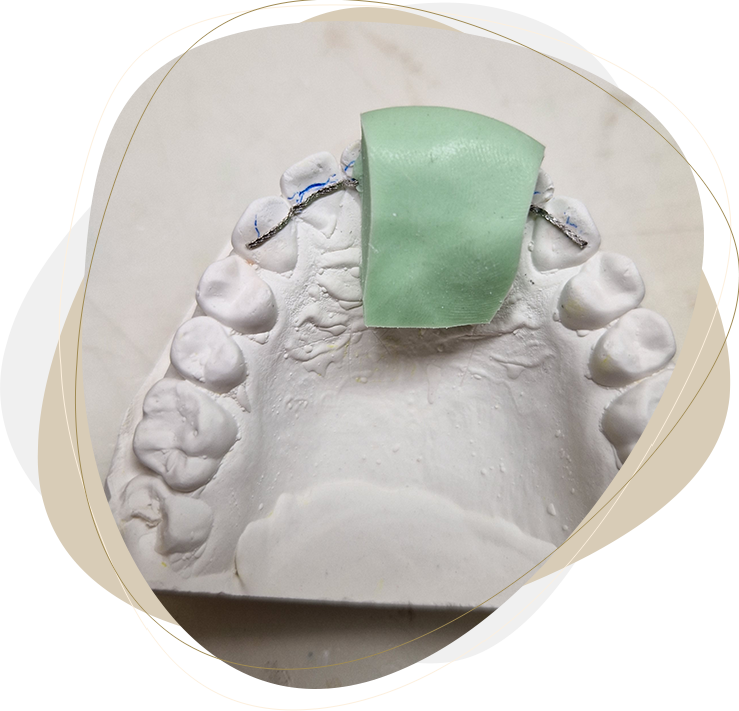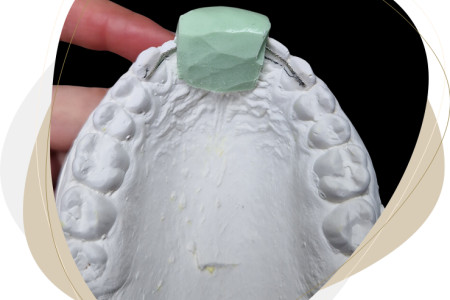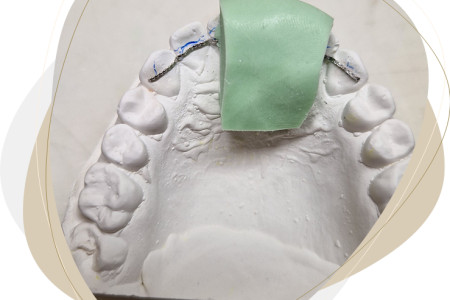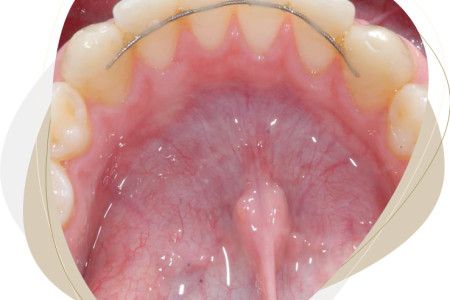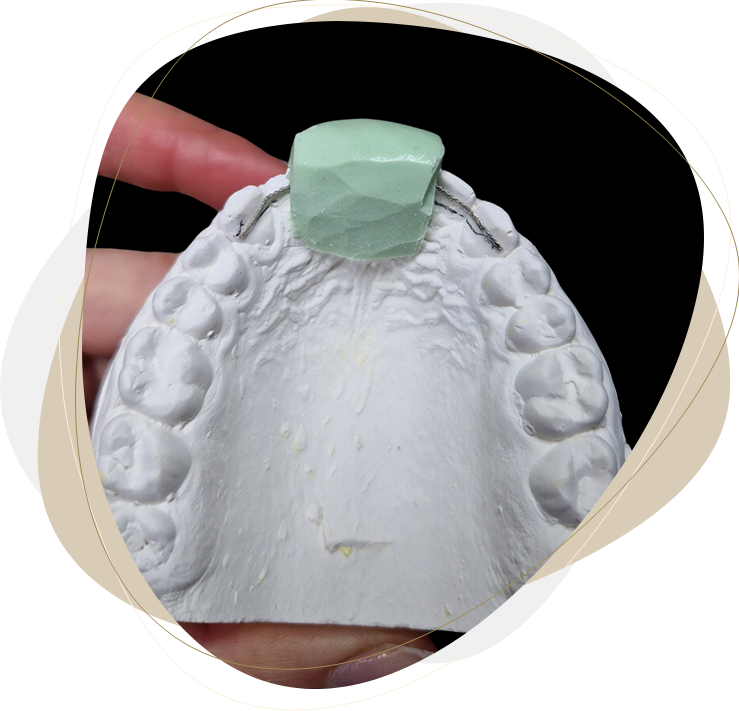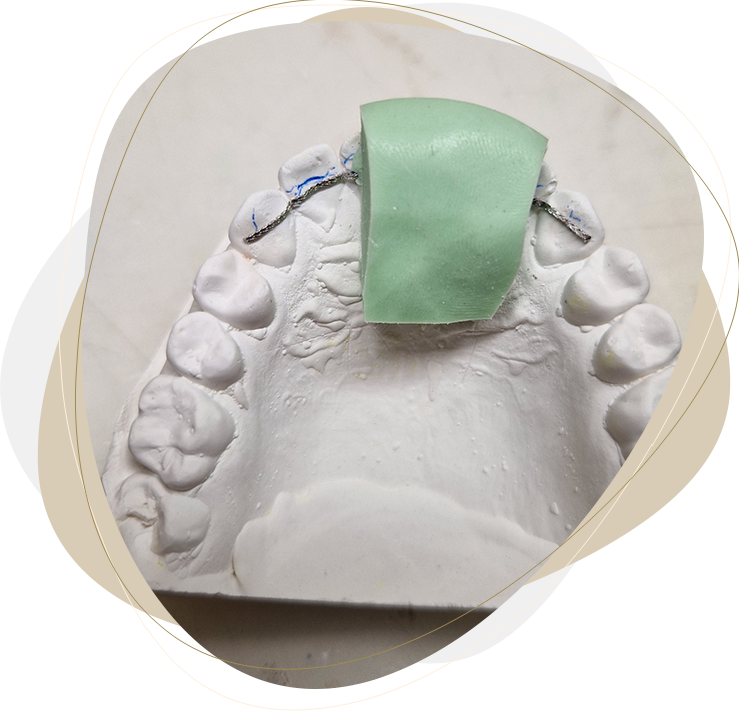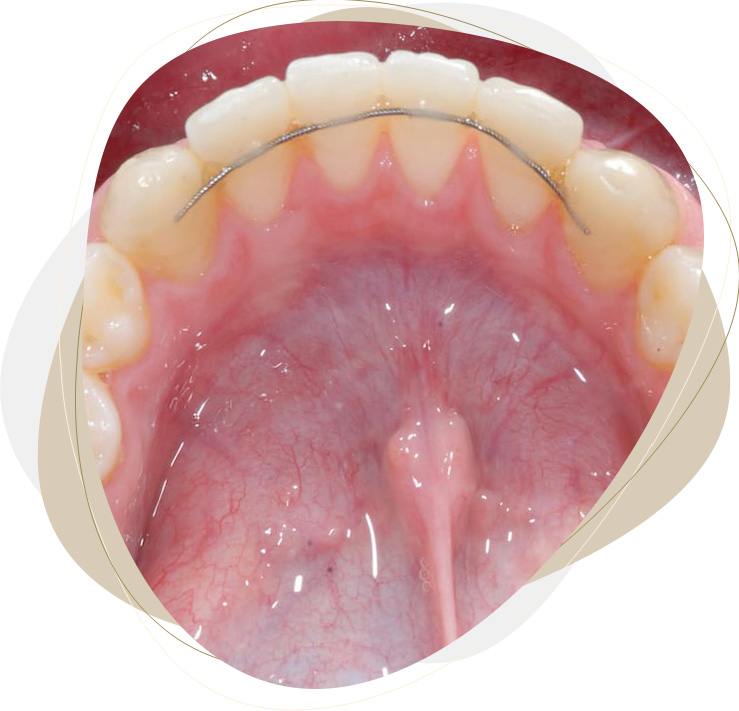Table of Contents
Description and Purpose
A permanent retainer is an orthodontic component used after treatment to maintain the teeth in their new positions and prevent relapse. It typically consists of a metal wire bonded to the inner side of the teeth using light-curable composite resin.
Procedure with Transfer
Model Preparation:
- Based on impressions or a 3D scan of the patient's teeth, an accurate gypsum model or 3D-printed model is created.
- This model serves as a template for the retainer.
Wire Formation:
- The orthodontic wire is shaped and fitted to the inner surfaces of the teeth on the model.
- The wire should be precisely adapted to the shape of the teeth to ensure maximum retainer effectiveness.
Wire Design:
- Direct design in CAD software on digital models is possible.
- After designing, the prepared file is sent to a device that sinters metal (prints in metal).
Transfer:
- To transfer the exact wire placement from the model to the patient's mouth, special transfer techniques are used.
- One method involves using a clear transfer tray made from plastic.
- Alternatively, a silicone transfer mold can be vacuum-formed, achieving the same result as trays.
Application in the Mouth:
- These transfers are formed on the model with the wire attached and then used to transfer the wire to the patient's mouth.
- The transfer tray with the wire is placed in the patient's mouth.
- Using light-curable orthodontic adhesive, the wire is bonded to the inner surfaces of the teeth.
- The transfer tray is then removed, leaving the wire precisely adhered to the teeth.
Advantages
- Stability: A permanent retainer ensures continuous maintenance of the teeth in their new positions, minimizing the risk of relapse.
- Invisibility: The wire is bonded to the lingual side, making it virtually invisible during daily activities.
- Comfort: Once patients get used to the retainer, they usually experience minimal discomfort.
Disadvantages
- Hygiene: Maintaining proper oral hygiene can be more challenging as the wire can trap food particles and plaque.
- Permanence: Since the retainer is fixed, it cannot be removed, which can be inconvenient for some patients.
Indications for Use
- A permanent retainer is particularly indicated for patients with a high risk of relapse.
- It is also recommended in cases where stabilizing the teeth after orthodontic treatment is crucial for long-term success.
Summary
A permanent retainer with transfer is an effective means of maintaining orthodontic treatment results. Precise fitting and correct application are crucial for its effectiveness. Thanks to modern transfer techniques, it is possible to accurately and securely bond the retainer, ensuring bite stability and patient satisfaction.
